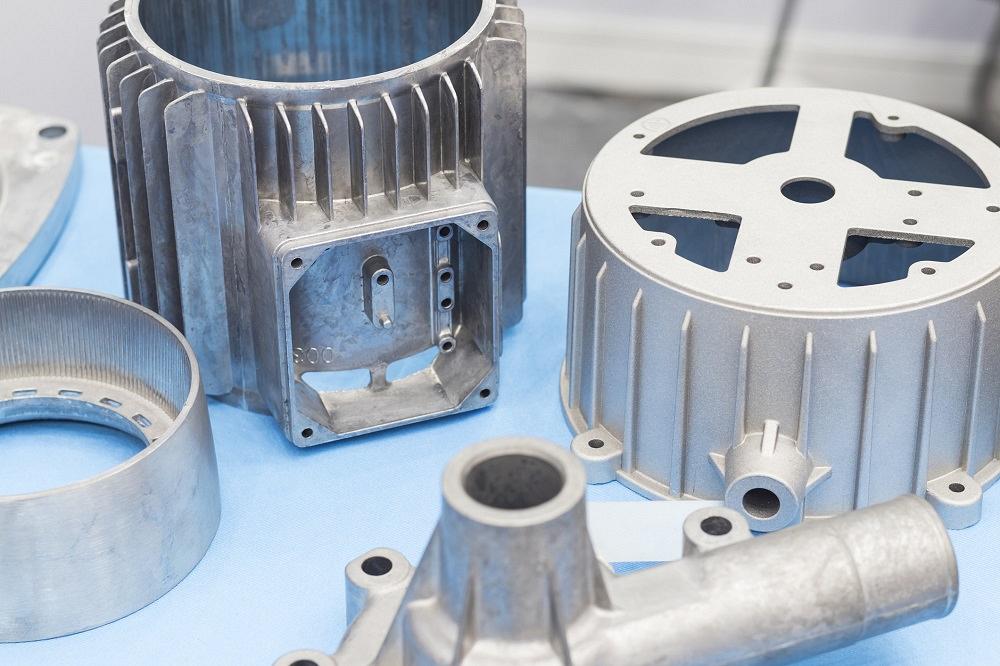A Biased View of Alcast Company
A Biased View of Alcast Company
Blog Article
Excitement About Alcast Company
Table of ContentsThe Facts About Alcast Company UncoveredWhat Does Alcast Company Do?Examine This Report about Alcast CompanyNot known Details About Alcast Company The Ultimate Guide To Alcast CompanyThings about Alcast Company
The refined difference hinges on the chemical material. Chemical Comparison of Cast Light weight aluminum Alloys Silicon advertises castability by reducing the alloy's melting temperature level and enhancing fluidity throughout casting. It plays a vital function in enabling elaborate mold and mildews to be loaded properly. Additionally, silicon adds to the alloy's strength and put on resistance, making it useful in applications where toughness is vital, such as automobile parts and engine components.It additionally enhances the machinability of the alloy, making it simpler to process into finished items. In this method, iron contributes to the general workability of light weight aluminum alloys.
Manganese adds to the strength of light weight aluminum alloys and boosts workability (Aluminum Casting). It is generally used in functioned light weight aluminum products like sheets, extrusions, and accounts. The existence of manganese help in the alloy's formability and resistance to breaking throughout construction processes. Magnesium is a lightweight element that supplies strength and influence resistance to light weight aluminum alloys.
The Ultimate Guide To Alcast Company
It allows the production of lightweight elements with exceptional mechanical buildings. Zinc boosts the castability of light weight aluminum alloys and aids manage the solidification procedure throughout casting. It enhances the alloy's strength and firmness. It is typically located in applications where elaborate shapes and great information are needed, such as decorative spreadings and specific auto parts.

The main thermal conductivity, tensile toughness, yield stamina, and prolongation vary. Among the above alloys, A356 has the highest thermal conductivity, and A380 and ADC12 have the most affordable.
Alcast Company for Beginners

In accuracy casting, 6063 is well-suited for applications where elaborate geometries and top quality surface area coatings are extremely important. Instances include telecommunication rooms, where the alloy's remarkable formability enables sleek and visually pleasing layouts while keeping structural honesty. Likewise, in the Illumination Solutions market, precision-cast 6063 components produce classy and reliable illumination fixtures that require complex shapes and excellent thermal efficiency.
It brings about a better surface coating and much better deterioration resistance in A360. Furthermore, the A360 shows superior prolongation, making it optimal for facility and thin-walled elements. In accuracy spreading applications, A360 is appropriate for markets such as Customer Electronics, Telecommunication, and Power Tools. Its enhanced fluidness permits for intricate, high-precision components like smart device casings and interaction tool real estates.
The Best Guide To Alcast Company
Its unique homes make A360 a beneficial option for accuracy casting in these markets, boosting item sturdiness and top quality. Aluminum alloy 380, or A380, is a commonly made use of casting alloy with a number of unique qualities. It offers superb castability, making it an ideal option for accuracy spreading. A380 exhibits good fluidity when molten, making certain intricate and in-depth mold and mildews are properly reproduced.
In precision casting, aluminum 413 beams in the Customer Electronic Devices and Power Equipment markets. It's frequently utilized to craft elaborate elements like smartphone housings, camera bodies, and power device coverings. Its accuracy is exceptional, with tight tolerances approximately 0.01 mm, making certain remarkable item assembly. This alloy's superior deterioration resistance makes it a superb selection for outside applications, guaranteeing lasting, durable items in the discussed industries.
Alcast Company - An Overview
Once you have actually determined that the aluminum pass away casting procedure is appropriate for your task, a critical next step is selecting the most appropriate alloy. The light weight aluminum alloy you select will significantly influence both the casting process and the homes of the end product. As a result of this, you need to make your choice thoroughly and take an educated strategy.
Determining the most suitable aluminum alloy for your application will mean weighing a broad range of attributes. These relative alloy attributes adhere to the North American Pass Away Casting Association's guidelines, and we've divided them right into 2 groups. The initial group addresses alloy attributes that impact the production process. The second look at here now covers qualities affecting the homes of the end product.
More About Alcast Company
The alloy you pick for die spreading directly impacts several elements of the casting procedure, like how very easy the alloy is to collaborate with and if it is vulnerable to casting problems. Warm breaking, likewise referred to as solidification splitting, is a typical die spreading defect for aluminum alloys that can cause inner or surface-level tears or splits.
Certain light weight aluminum alloys are a lot more susceptible to hot fracturing than others, and your selection ought to consider this. An additional common flaw found in the die casting of light weight aluminum is pass away soldering, which is when the cast stays with the die wall surfaces and makes ejection hard. It can damage both the cast and the die, so you must seek alloys with high anti-soldering buildings.
Corrosion resistance, which is already a significant quality of light weight aluminum, can differ substantially from alloy to alloy and is an important characteristic to think about depending upon the environmental conditions your product will be exposed to (Foundry). Wear resistance is another residential property frequently looked for in aluminum products and can differentiate some alloys
Report this page